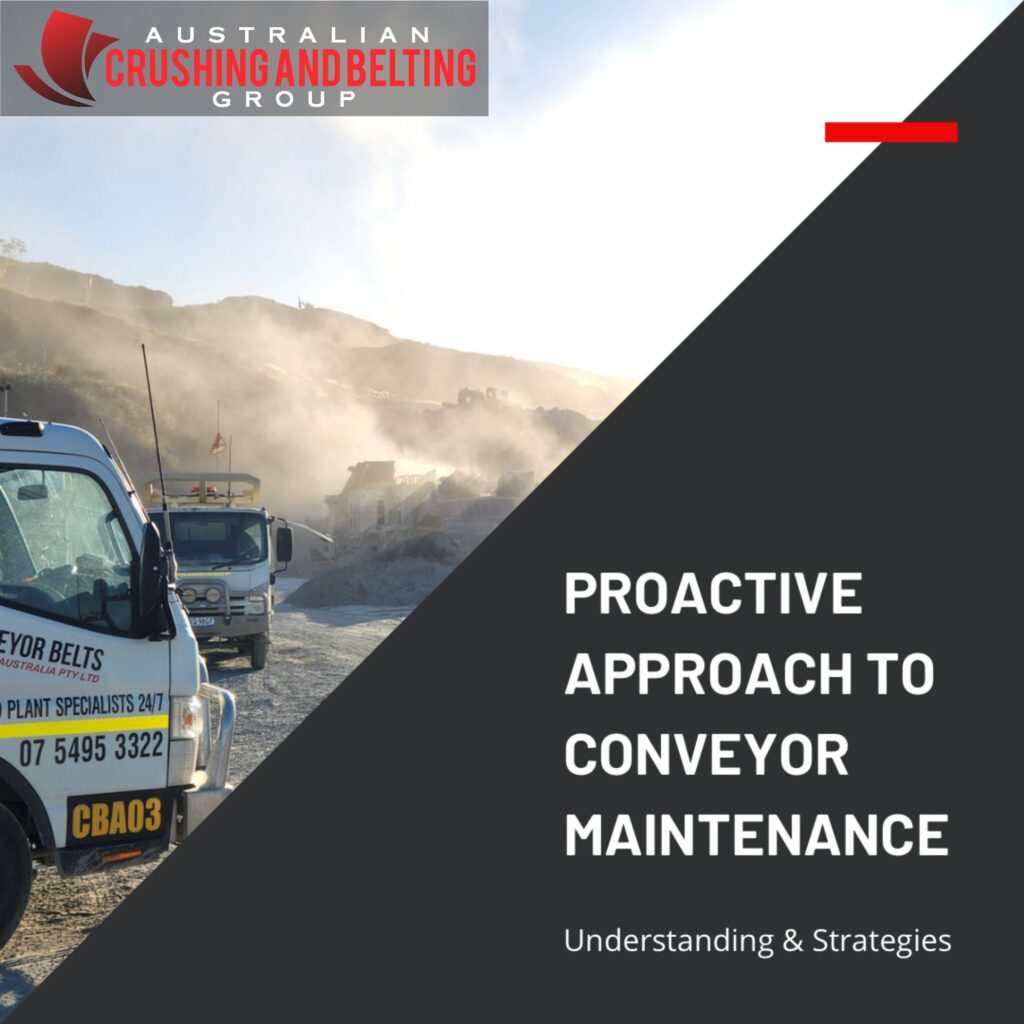In the demanding environments of quarry and mining operations, the efficiency and reliability of conveyor systems are critical to success. These systems are central to the movement and processing of materials, and their productivity and safety are built upon the quality of the constitute parts that make the conveyor, including the rollers, belting and motors. The focus of this article is on preventative maintenance – a strategy essential not just for the upkeep of these systems, but as a crucial aspect of operational safety and efficiency. By implementing effective maintenance protocols, companies can significantly reduce downtime, increase system longevity, and ensure a safer working environment. This blog post aims to explore the best practices in preventative maintenance, offering insights into how such measures directly benefit customers and enhance overall safety standards in the industry.
Understanding Your Conveyor System
At the heart of effective maintenance is a thorough understanding of your conveyor system. These systems, varying greatly in size, design, and function, are as diverse as the industries they serve. A key step for any quarry or mining operation is to know the specifics of their conveyor system. This includes understanding the types of materials being transported, the design of the conveyor belt, and the environmental conditions in which the system operates. Familiarity with your system not only aids in identifying potential issues before they escalate but also ensures that maintenance efforts are as targeted and efficient as possible. Partnering with knowledgeable conveyor belt suppliers and manufacturers is crucial in gaining this comprehensive understanding.
Key Components of Conveyor Systems
A conveyor system consists of several key components, each playing a vital role in its operation. The conveyor belt itself, often tailored to specific tasks and environments, is the most visible part. However, other components like rollers (crucial conveyor parts rollers), motors, and the structural frame are equally important. Regular maintenance of these components is essential for the smooth operation of the system. For instance, worn-out rollers can lead to belt misalignment, which in turn can cause extensive damage to both the belt and the entire system. Understanding and maintaining these components are not just about prolonging their life but also about preventing potential hazards that could compromise worker safety.
Preventative Maintenance Strategies
The cornerstone of effective conveyor system upkeep is a robust preventative maintenance strategy. This involves:
Scheduled Inspections: Routine checks are vital. Regularly inspecting the conveyor belt, rollers, motors, and other components can help identify wear and tear before they lead to failure. We can provide expert conveyor belt inspections on critical belts to enable repair work before highly expensive replacement work is conducted. Routine inspections and repairs can significantly enhance the lifespan of your belt.
Maintenance of Key Parts: Specific attention should be given to critical parts of the conveyor. This includes ensuring the conveyor belt is correctly tensioned, the rollers are not worn or jammed, and the motors are functioning efficiently. A single roller can act as a knife to your conveyor belt, leading to costly replacements.
Training and Education: A well-trained maintenance team is crucial. Ensuring that the staff is knowledgeable about the intricacies of the conveyor system allows for better identification of potential issues and more effective maintenance practices. If you need support beyond your team, we are always happy to help.
Benefits of a Pro-Active Maintenance Approach
Adopting a pro-active approach in maintenance goes beyond merely ensuring the functional integrity of the conveyor system. It is about aligning the maintenance practices with the broader goals of safety, efficiency, and reliability, which are paramount to your operational success. Regular and thorough maintenance reduces the likelihood of unexpected breakdowns, thereby minimising operational disruptions and potential safety hazards. This approach not only enhances the lifespan of the conveyor system but also plays a significant role in sustaining the productivity and safety of the customers’ operations.
Choosing the Right Supplier or Manufacturer
The choice of supplier for your conveyor parts and belts is a critical decision impacting the effectiveness of your maintenance strategy. A reputable supplier or manufacturer not only provides high-quality conveyor parts and belts but also offers comprehensive support in terms of maintenance expertise and spare parts availability. Look for a partner who understands the specific needs of the mining and quarry industry, and can offer tailored solutions that address both efficiency and safety concerns. The right supplier or manufacturer will be a collaborator in your efforts to maintain an optimal operational environment, ensuring that your conveyor system is always at its best.
Conclusion
Preventative maintenance is not just a technical requirement; it’s a strategic approach that enhances safety, efficiency, and reliability in the demanding world of quarry and mining operations. By understanding your conveyor system, focusing on key components, and implementing a robust maintenance strategy, you can significantly improve the safety and efficiency of your operations. Partnering with a knowledgeable and experienced conveyor belt company is vital in achieving these goals. Remember, the right maintenance strategy is a critical investment in the longevity of your conveyor system and the safety of your operations.






